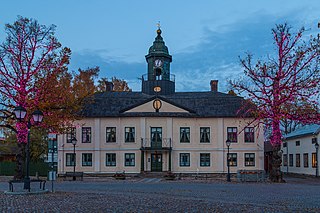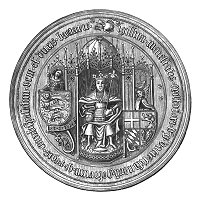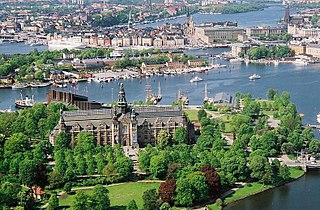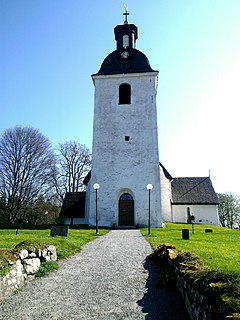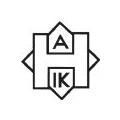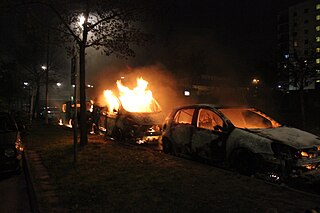Husby is the name of many present-day Swedish (and other Scandinavian) farms and villages.

Sweden, officially the Kingdom of Sweden, is a Scandinavian Nordic country in Northern Europe. It borders Norway to the west and north and Finland to the east, and is connected to Denmark in the southwest by a bridge-tunnel across the Öresund, a strait at the Swedish-Danish border. At 450,295 square kilometres (173,860 sq mi), Sweden is the largest country in Northern Europe, the third-largest country in the European Union and the fifth largest country in Europe by area. Sweden has a total population of 10.2 million of which 2.5 million has a foreign background. It has a low population density of 22 inhabitants per square kilometre (57/sq mi). The highest concentration is in the southern half of the country.
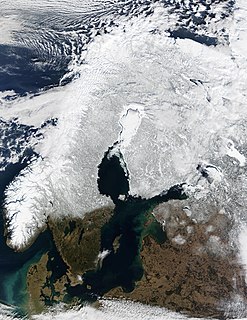
Scandinavia is a region in Northern Europe, with strong historical, cultural, and linguistic ties. The term Scandinavia in local usage covers the three kingdoms of Denmark, Norway, and Sweden. The majority national languages of these three, belong to the Scandinavian dialect continuum, and are mutually intelligible North Germanic languages. In English usage, Scandinavia also sometimes refers to the Scandinavian Peninsula, or to the broader region including Finland and Iceland, which is always known locally as the Nordic countries.
Originally, they formed a network of royal estates, called Uppsala öd, that were the property of the Swedish king. There were about 70 husbys and they are most common in eastern Svealand, of which 25 are found in Uppland. There were a few outside this area, such as Husaby in Västergötland.
Uppsala öd, Old Norse: Uppsala auðr or Uppsala øðr was the name given to the collection of estates which was the property of the Swedish Crown in medieval Sweden. Its purpose was to finance the Swedish king, originally the "king of Uppsala", and they supported the king and his retinue while he travelled through the country. There was one estate of this kind in most hundreds and it was usually called Husaby. It was the home of the king's tax collector, and it was at the local estate of Uppsala öd that the people of the hundred delivered the taxes in form of goods. The estates were most common in Svealand.

Svealand, Swealand or Sweden proper is the historical core region of Sweden. It is located in south central Sweden and is one of three historical lands of Sweden, bounded to the north by Norrland and to the south by Götaland. Deep forests, Tiveden, Tylöskog, and Kolmården, separated Svealand from Götaland. Historically, its inhabitants were called Svear, from which is derived the English Swedes.

Uppland is a historical province or landskap on the eastern coast of Sweden, just north of Stockholm, the capital. It borders Södermanland, Västmanland and Gästrikland. It is also bounded by lake Mälaren and the Baltic sea. On the small uninhabited island of Märket in the Baltic, Uppland has a very short and unusually shaped land border with Åland, an autonomous province of Finland.
A Husby consisted of a big and centrally located farm, and they may have originally been the property of local strongmen who were defeated by the Swedish kings. During the 13th century a more efficient administration rendered them obsolete.
